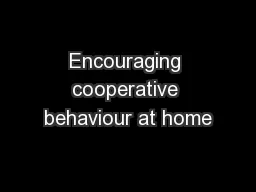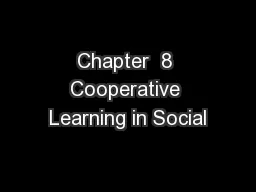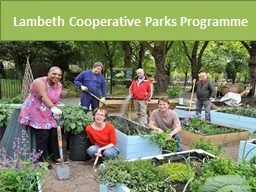PPT-Encouraging cooperative behaviour at home
Author : olivia-moreira | Published Date : 2016-05-11
Madhavi Nawana Parker BA PsychGrad Dip Rehab CMACA Behaviour Consultant Behaviour All children experience difficult periods where their actions are inappropriate
Presentation Embed Code
Download Presentation
Download Presentation The PPT/PDF document "Encouraging cooperative behaviour at hom..." is the property of its rightful owner. Permission is granted to download and print the materials on this website for personal, non-commercial use only, and to display it on your personal computer provided you do not modify the materials and that you retain all copyright notices contained in the materials. By downloading content from our website, you accept the terms of this agreement.
Encouraging cooperative behaviour at home: Transcript
Download Rules Of Document
"Encouraging cooperative behaviour at home"The content belongs to its owner. You may download and print it for personal use, without modification, and keep all copyright notices. By downloading, you agree to these terms.
Related Documents














